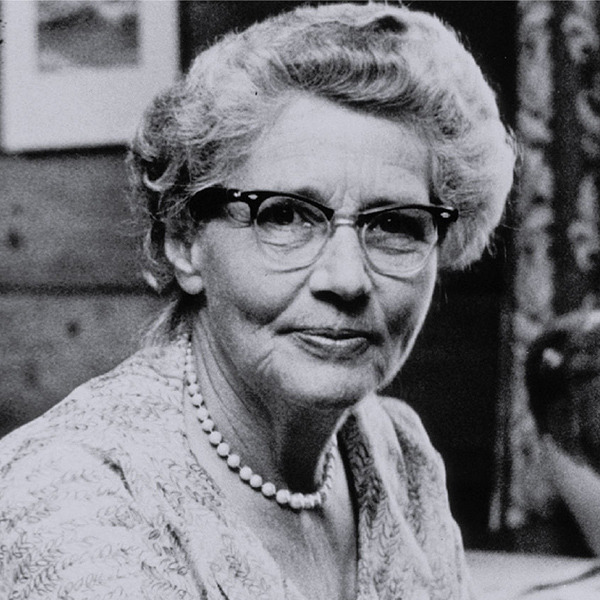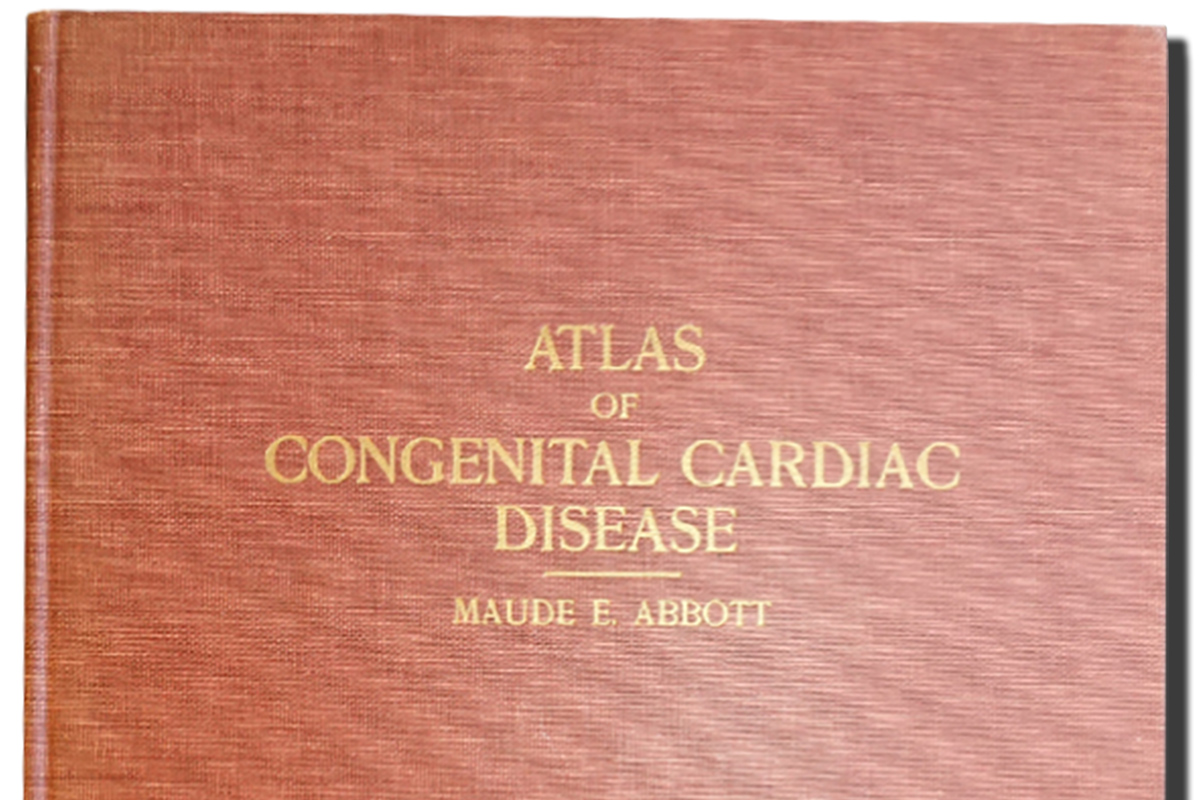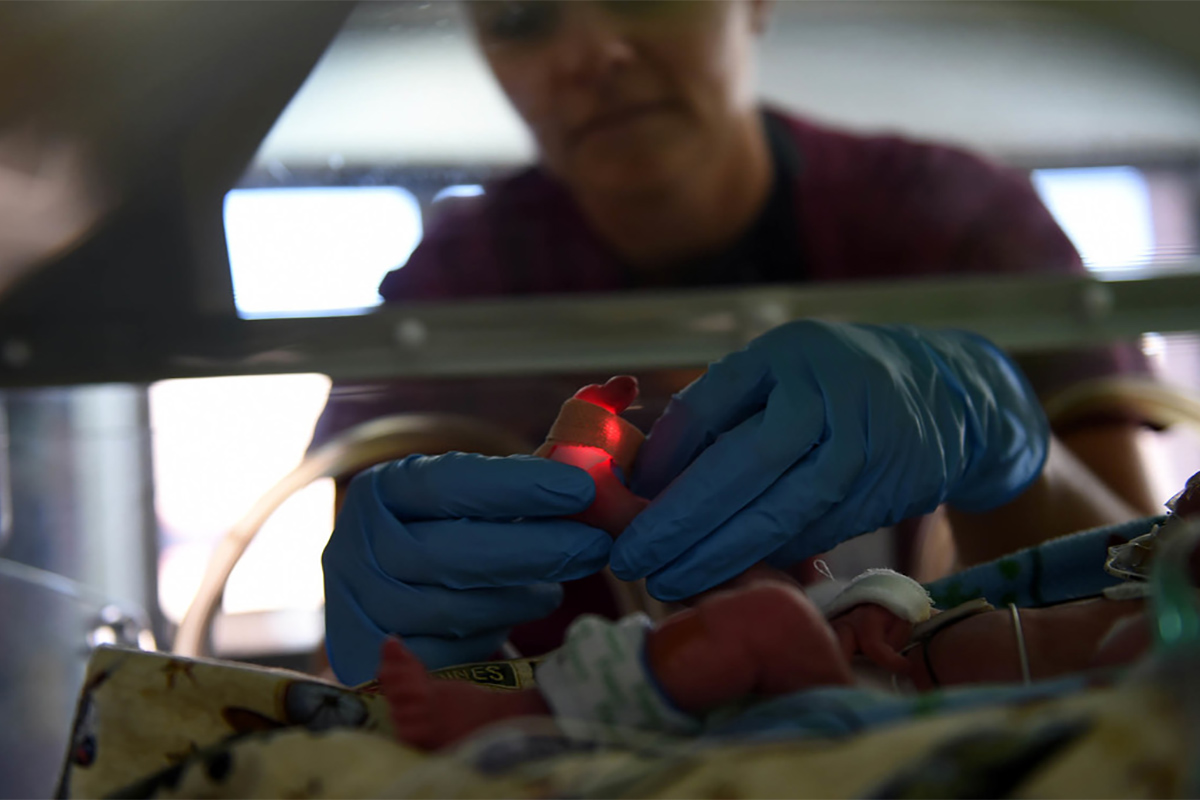Feature | Pediatric Cardiology: A Specialty Spurred by the Groundbreaking Work of Women – The Legacies of Maude Abbott, MD, and Helen B. Taussig, MD, FACC
Caring for children who were destined to die from heart disease before they could walk, talk or attend school was not a relevant profession in the first half of the 20th century.
In the male-dominated field of medicine, caring for these children who were certain to die before adulthood was viewed as work best left to those with maternal instincts: women.
A century later, that once marginalized job is a dynamic specialty built on the groundbreaking work of two women who overcame archaic attitudes by following their scientific instincts.
 Credit: © Yousuf Karsh; Estate of Yousuf Karsh, http://karsh.org
Credit: © Yousuf Karsh; Estate of Yousuf Karsh, http://karsh.org Armed with determination, intelligence and curiosity, Maude Abbott, MD, and Helen B. Taussig, MD, FACC, cleared the hurdles placed in front of women interested in science, eventually earning medical degrees and laying the foundation for the modern specialty of pediatric cardiology.


 Ami B. Bhatt, MD, FACC
Ami B. Bhatt, MD, FACC
"Maude Abbott went through hundreds of specimens to completely define what was congenital heart disease. It was Helen Taussig who had to insist on what she thought needed to be done for 'blue babies' despite the fact that as a woman she was denied entry to medical school and was not given the same opportunities as men," says Ami B. Bhatt, MD, FACC, who directs the adult congenital heart disease program at Massachusetts General Hospital in Boston, MA, and is associate professor of medicine at Harvard Medical School.
"What I love about pediatric cardiology is that our two foremothers – if you will, rather than forefathers – were very determined women and that is how this field was born."
Finding a Way to Make a Difference

Maude Abbott earned her medical degree in Quebec, Canada, in 1894, after having been denied admission to McGill Medical School, despite her strong academic performance. In 1898, she met William Osler, MD, one of the founders of Johns Hopkins Hospital, who encouraged her interest in the study of cardiac specimens of infants and young children who died from congenital heart disease. This led to her becoming the assistant curator at the McGill University Pathological Museum.
"At the museum, she studied hundreds of anatomic specimens to start to understand the various mechanisms and heterogeneity that is congenital heart disease as we understand it today," Bhatt says. "She was drawing from the cases of infants who had passed away in her care. She brought all these avenues together – her scientific interests with her clinical interests – and that is when she started to publish her papers in pediatric cardiology."
In 1936, Abbott wrote the seminal Atlas of Congenital Cardiac Disease, which introduced a new classification system and described records of more than 1,000 cases of clinical and postmortem records.
At the same time, a young physician at Johns Hopkins, Helen Taussig, was expanding her clinical skills. She established a children's cardiac clinic with a focus on learning more about congenital heart disease through diagnosis rather than autopsies.
 M. Regina L. Lantin-Hermoso, MD, FACC
M. Regina L. Lantin-Hermoso, MD, FACC
"She used the traditional skills of a physician – history-taking and physical examination. She also used basic diagnostic tools available at the time, such as chest x-rays, electrocardiograms and barium swallows, paying particular attention to pulmonary vascular markings," says M. Regina L. Lantin-Hermoso, MD, FACC, medical director of main campus outpatient cardiology clinics at Texas Children's Hospital, and professor of pediatrics at Baylor College of Medicine in Houston, TX.
"Taussig is near and dear to any woman who is a pediatric cardiologist because she is our role model. She is the mother of pediatric cardiology."
With her emphasis on diagnosis and the use of x-rays and fluoroscopy, Taussig found that babies with tetralogy of Fallot actually had higher oxygen levels when they had a patent ductus arteriosus.

In the mid-1940s, she worked with surgeon Alfred Blalock, MD, and surgical technician Vivien Thomas to develop the Blalock-Thomas-Taussig shunt that improved pulmonary blood flow in blue babies with tetralogy of Fallot, allowing them to survive.
In 1947, she wrote Congenital Malformations of the Heart, a landmark publication in the establishment of pediatric cardiology as an independent medical specialty.
In the early 1960s, Taussig led another movement with Frances Oldham Kelsey, MD, this time to ban the use of thalidomide as a treatment for morning sickness during pregnancy.
Thalidomide was found to cause birth defects and was banned in the U.S. by the Food and Drug Administration.
Growth Fueled by Innovation
With a foundation of improved diagnosis using traditional techniques coupled with innovative approaches, pediatric cardiologists became leaders in using new technology to improve treatments and extend the lives of patients with congenital heart disease.
"The ability to do better surgery and have better anesthesia and better care in the ICU all improved over the 1950s and 60s," Bhatt says.
"It was the concept that these children deserved a chance to live and did not need to be sent home to die that played a large part in what moved the field forward."
In the 1970s, the Fontan procedure was developed to manage pediatric patients with single-ventricle hearts, allowing them to live to adulthood. Other advances had similar impact, including the use of echocardiography, high-resolution imaging, prostaglandin infusion, micro-vascular surgery, transcatheter procedures, mechanical-assist devices and cardiac transplantation.

"Many different technologies evolved and the expected outcomes for various defects continue to improve," Lantin-Hermoso says.
"Today, it is expected that simple defects can be treated with a high level of excellence, minimal morbidity and very low, if any, mortality. Today, survival is common, even for complex defects previously lethal without therapy. Focus has evolved from merely survival to improved quality of life."
That focus is seen in another groundbreaking evolution – the transition from exercise restriction to exercise prescription, resulting in more active lives for children and adult survivors of congenital heart disease.
"Pediatric cardiology is a role model for other subspecialties," Bhatt says. "We have an equal number of female and male cardiologists and that has allowed the field to remain diverse in its approach to how we do care. Having diverse opinions and diverse roles in leadership can move a field or a company much faster. That is a large part of why pediatric cardiology has advanced."
As we celebrate Women's History Month, share your stories of women leaders who are making history in medicine using the #TheFaceOfCardiology and #CardiologyMag hashtags.
Clinical Topics: Cardiac Surgery, Congenital Heart Disease and Pediatric Cardiology, Dyslipidemia, Invasive Cardiovascular Angiography and Intervention, Noninvasive Imaging, Cardiac Surgery and CHD and Pediatrics, Congenital Heart Disease, CHD and Pediatrics and Imaging, CHD and Pediatrics and Interventions, CHD and Pediatrics and Prevention, CHD and Pediatrics and Quality Improvement, Lipid Metabolism, Interventions and Imaging, Interventions and Structural Heart Disease, Echocardiography/Ultrasound, Nuclear Imaging
Keywords: ACC Publications, Cardiology Magazine, Infant, Female, Fontan Procedure, Thalidomide, Ductus Arteriosus, Patent, Clinical Competence, Heart Defects, Congenital, Quality of Life, United States Food and Drug Administration, Congenital Abnormalities, Tetralogy of Fallot, Pediatrics, Echocardiography, Electrocardiography, Fluoroscopy, Anesthesia, Prostaglandins, Intensive Care Units, Canada
< Back to Listings


